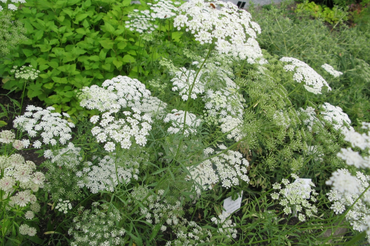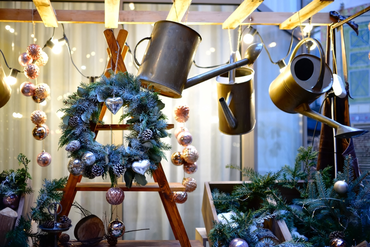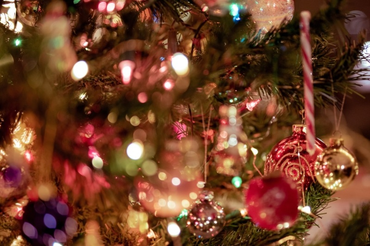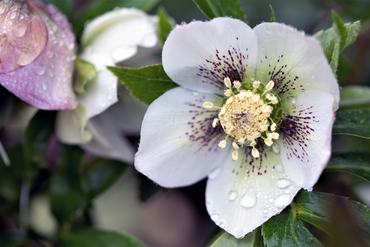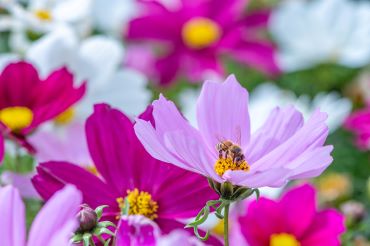
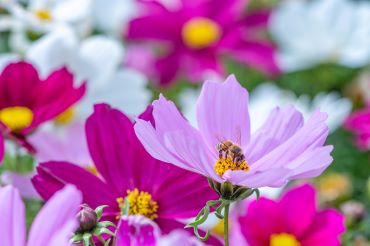
We have all heard about the importance of having a pollinator-friendly garden, but how many of us know what that means and what steps we can take to make our outdoor space more inviting to pollinators? If you want to take the first steps to creating a garden perfect for bees and other pollinators, here are some helpful tips.
What is a Pollinator?
Pollinators are vital contributors to our ecosystem and, put simply, humans would not survive without them. Around 35% of the food we eat is a direct result of the work of pollinators. They are crucial to the reproduction of wildflowers and plants – a necessity to provide enough oxygen, especially in a world where the increased use of fossil fuels has led to more carbon dioxide in the atmosphere.
Bees are the most well-known but other wildlife including birds, butterflies, ants, and bats are also pollinators.
An Inviting Environment
Creating an environment that is attractive to pollinators is not difficult but does take planning. You can make your outdoor space more inviting to pollinators whatever its size, so whether you have a balcony or a large garden, aim to imitate nature.
Before you begin planting, plan. As well as plants and flowers (situated in a sunny but sheltered spot), pollinators will also benefit from access to water, so a pond or bird bath is ideal. If you have limited space, even a saucer of water will help. Consider creating a safe space for pollinators to settle within your garden by providing bug hotels, bird boxes, and nesting boxes for bees. These can be bought ready-made, or you could make your own. When planting, do so in groups (if you have a courtyard or balcony, grow in containers), as this makes it easier for the pollinator to travel from flower to flower, rather than when mixing flower types, which can make it harder for pollinators to pick up a scent or focus on a colour. Planting in blocks will create a big impression that will be irresistible to them.
The Best Plants for Pollinators
When planting with pollinators in mind, think about how you can make their job easier. Bees can see colour, but their spectrum is different from ours. Blue and purple flowers are most visible to them, which is why bushes such as lavender attract vast numbers of bees. Blue flowers are also nectar-rich, making them appealing to pollinators, and with a wider choice of blue flowers available than you might think, there is no excuse not to help our pollinator friends.
Forget-me-not and blue pearl crocus are popular spring choices, with love-in-a-mist and chicory excellent choices for a pollinator-friendly summer garden. Blue salvia and globe thistle will keep the bees happy into late summer and autumn. Aim to have plants in your garden that will attract pollinators for as much of the year as possible, and don’t forget night flowers for moths!
When flower shopping, rather than closed flowers, look for single-petal plants with flatter flowers and a visible stamen. This gives the pollinator easy access to the nectar and pollen. Good examples are cosmos and echinacea, with a large central pollen hub to draw in bees. Choose native plants where possible, as they are best suited for native pollinators, and don’t be tempted to just plant those that are most visually appealing – a diverse garden will attract more pollinators.
Gently scented flowers and herbs can attract pollinators as well as make your garden fragrant – when choosing seeds, look for the RHS Plants for Pollinators logo of a bumblebee against a yellow background, so you know you are choosing the most inviting options.
The Power of Rewilding
Rewilding doesn’t have to mean a messy garden. You can opt for a soft approach like No Mow May (a campaign originally started by botanical charity Plantlife to delay the first grass cut of the season until June to encourage the growth of dandelions and other early season weeds, which pollinators will be grateful for), or go wild and create your own dreamy wildflower meadow, perfect for the cottage garden look. Even a more natural-looking garden will need looking after, especially in the drier summer months. Water well, especially after planting seeds, to encourage growth.
Avoid using pesticides and weedkillers. These are harmful to soil and wildlife and are not compatible with creating a pollinator-friendly garden. Instead, if you do need to remove weeds, pull them up by hand.
Transforming your garden into a pollinator-friendly environment is a rewarding pastime that will bring joy to both you and the creatures who you live alongside. Whether you start small or adapt your whole outdoor space, the changes you make are benefiting the environment too, so be proud of the part you are playing in making our world a better place. And if you need advice on plants, talk to the experts at Carpenter’s!

